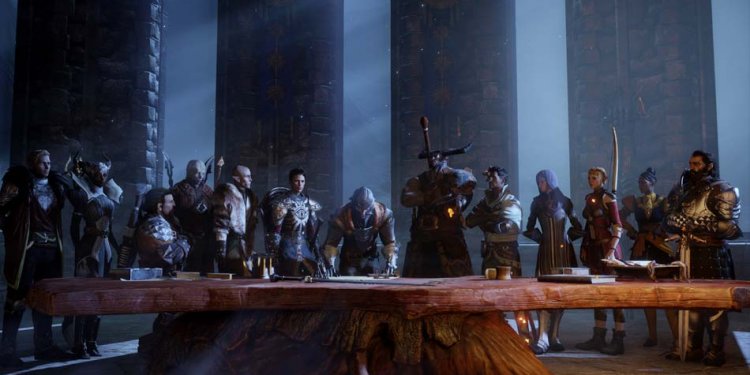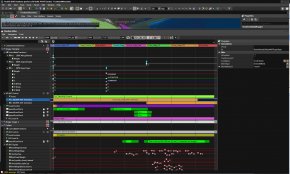
Dragon Age Inquisition at game
 The after is a guest article compiled by Jacques Lebrun, Specialized Director at Bioware taking care of Dragon Age Inquisition. In the future, we are going to you will need to provide you with more input through the developers behind the Frostbite engine, but in addition from all of the groups using it to generate great games.
The after is a guest article compiled by Jacques Lebrun, Specialized Director at Bioware taking care of Dragon Age Inquisition. In the future, we are going to you will need to provide you with more input through the developers behind the Frostbite engine, but in addition from all of the groups using it to generate great games.
As I compose this, the Dragon Age team is just a couple of months far from placing the finishing details on Inquisition, so that it’s proper to appear straight back during the lengthy and arduous trip to getting until now. Right after the launch of Dragon Age II, with a new generation of video gaming on the horizon, we knew we had a need to stretch our aspiration and deliver a-game well beyond anything BioWare had done before, which suggested a major shift in technology and in how we develop our games.
Finding Our Match
We began with an independent analysis of engine technologies. We looked at an upgrade to our own Eclipse engine, at third-party online game motors, as well as game motors developed within EA, including DICE’s Frostbite. After a three-month evaluation, we selected Frostbite as our preferred technology for BioWare’s after that generation of brands. There clearly was no business mandate; this was decided unanimously inside our studio. The timing ended up being perfect since the Frostbite team had been making plans to use into an independent motor staff.
A number of other groups in EA were visiting exactly the same conclusions. We had been instantly section of an evergrowing neighborhood of designers able to share a few ideas, share signal, and collaborate on common passions. This can open up all sorts of options for BioWare since we’ve typically created our games in vacuum pressure. (as yet, every BioWare name makes their own technology assessments, with avoided united states from working together on improvements.)
Frostbite gives us best-of-class visuals, more advanced level than everything seen in a BioWare subject. We typically concentrate our technology efforts on increasing storytelling and game play, so pairing up with a group enthusiastic about literally precise rendering ended up being a good fit. We had been also impressed by Frostbite’s capabilities for generating huge conditions, with powerful surface generation resources and versatile streaming choices.
Frostbite is also highly scalable, permitting games optimize high quality settings to match the abilities of many equipment. We encountered the considerable challenge of building a-game that could target the old and new generations of game consoles. We wanted to develop Inquisition when it comes to new systems first and foremost, together with scalability associated with the motor let's get just as much as we're able to out from the previous generation while however supplying a gameplay knowledge on par with all the brand-new generation’s offerings.
A Clean Slate
While Frostbite solved one pair of issues for us, we had been facing with a completely different emerge building a story-focused RPG in the engine. It was in the beginning designed for shooters, and now we identified many additions expected to support an RPG.
BioWare games are known for developing its characters and story through cinematics and interactive dialogue. We’ve invested years establishing a strong collection of resources for writing and scripting conversations into a cinematic experience that interacts with a complex land framework, while feeding to the pipeline for voice-over recording and localization. A majority of these resources wouldn’t incorporate because of the Frostbite device chain, therefore we rewrote all of them the new framework. It absolutely was a massive undertaking we wished to do only one time for many of our future games. Accordingly, we collaborated aided by the Frostbite cartoon team to build up engine improvements that could support fast development of cinematic content. We in addition caused the teams for the next Mass result online game while the unannounced IP to include the cinematic authoring tools into the workflows for discussion scripting and localization.
Another major undertaking was generating a next-generation RPG combat system. We created brand-new workflows into the Frostbite toolset for imagining animations with visual effects, sound files, and gameplay programs. This aesthetic workflow has permitted our developers to produce countless special spells and abilities along side numerous interesting and difficult enemies. The dragons that you’ll encounter stress the complexity that we is now able to get from our fight systems. These apex predators showcase targetable limbs and a component system that lets designers reconfigure each dragon to defend myself against a distinctive group of actions.
The Frostbite motor was designed to let online game groups make standard extensions that other games can then make use of. Collaborating on typical segments ensures that we're able to do the tiresome work once and leverage it within future titles. Cinematics and fight are merely a portion of the countless additions we needed to make towards engine. If you consider the Venn diagram of all you placed into a fantasy RPG this is certainlyn’t in today's shooter, record is overwhelming: personality data, personality modification, melee fight, magical impacts, products, crafting. Even a thought as simple as pausing the overall game during combat represented a challenging issue that hadn’t already been solved in Frostbite yet.
Through the get-go, we didn’t wish to you need to take the engine and branch off a BioWare version. As an alternative, we wished to assist the Frostbite staff to steadfastly keep up using the newest improvements and, at exactly the same time, add the improvements we were making. That’s easier in theory while the motor is undergoing significant enhancements and we’re making major improvements. We required the discipline to resist design patterns created from our previous brands therefore the rigor to very carefully review every customization to engine rule. Maintaining our code in sync utilizing the Frostbite development code required an enormous energy, nonetheless it reduced in important revisions we got from the Frostbite staff: the majority of the next-generation system code, continuous improvements toward toolset, and a huge selection of cool functions, such as for instance terrain that may have caves constructed into it.
Looking Forward
Dragon Age: Inquisition presents BioWare’s very first next-generation RPG from the Frostbite motor, and the games we’re establishing now is only going to build about this basis. In the past, we placed a couple of huge bets on moving into Frostbite motor and changing our development methodologies. It’s interesting to finally quickly lay down our hand.

















